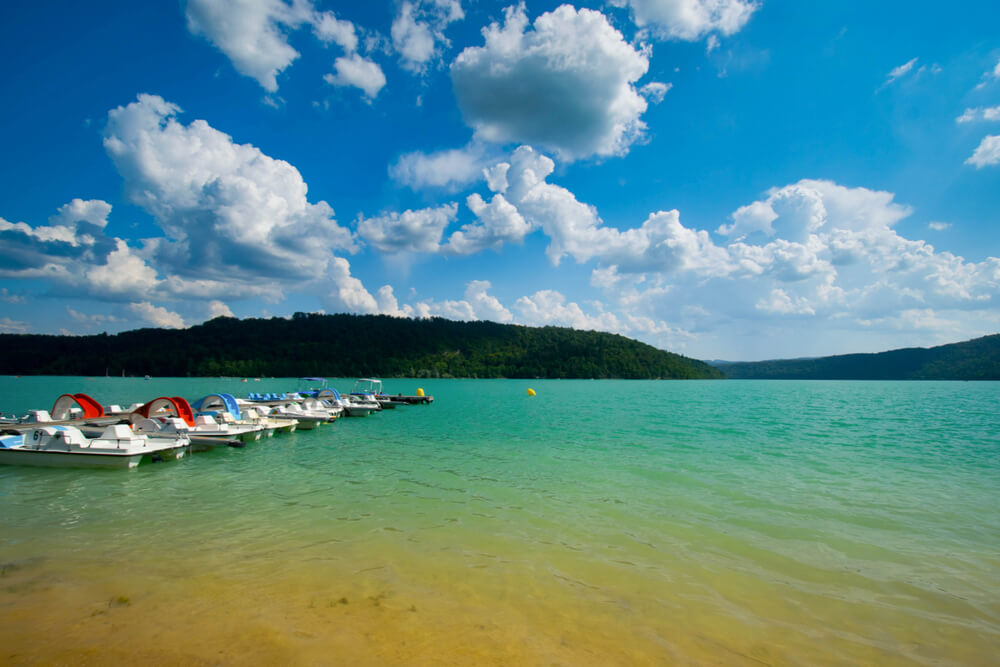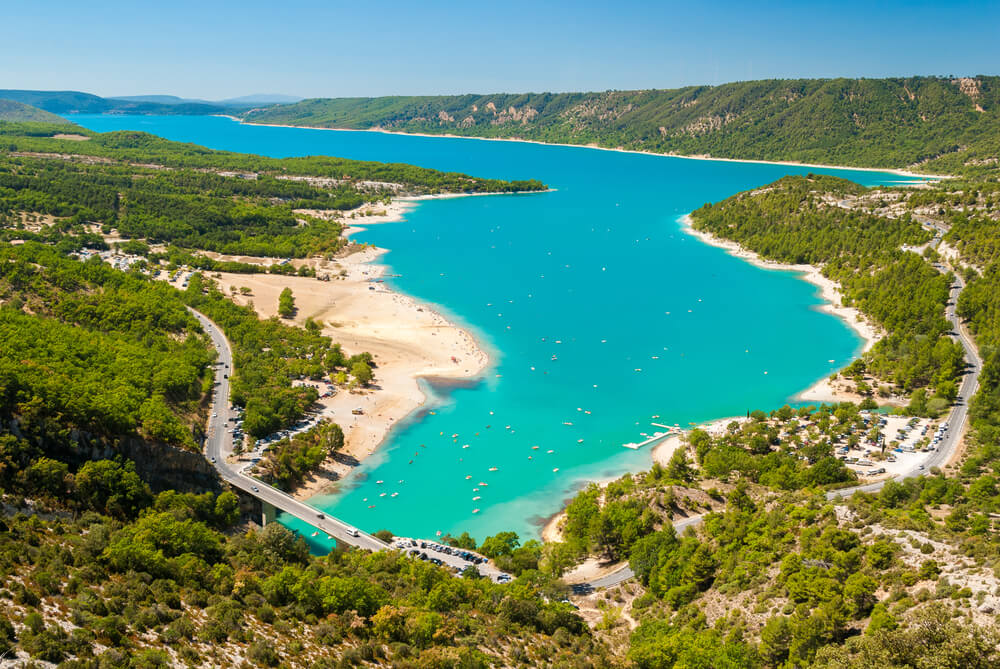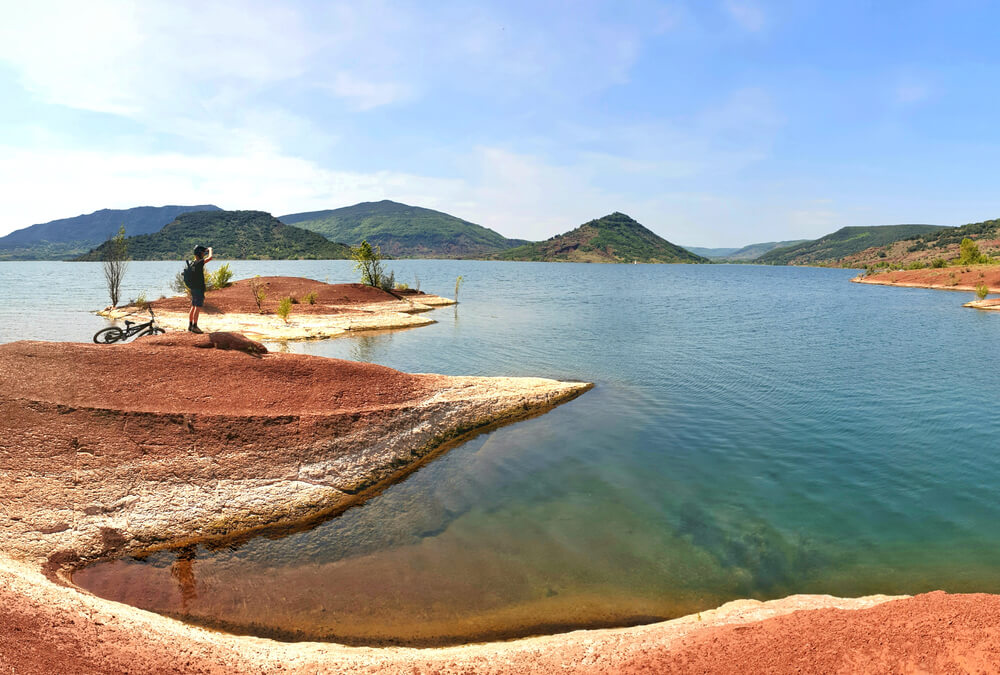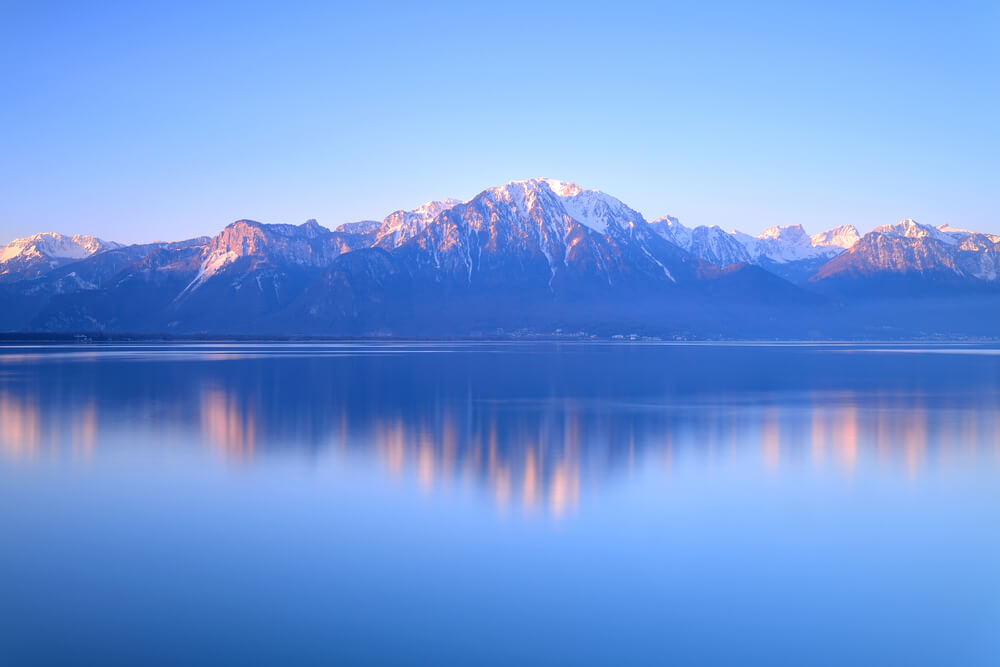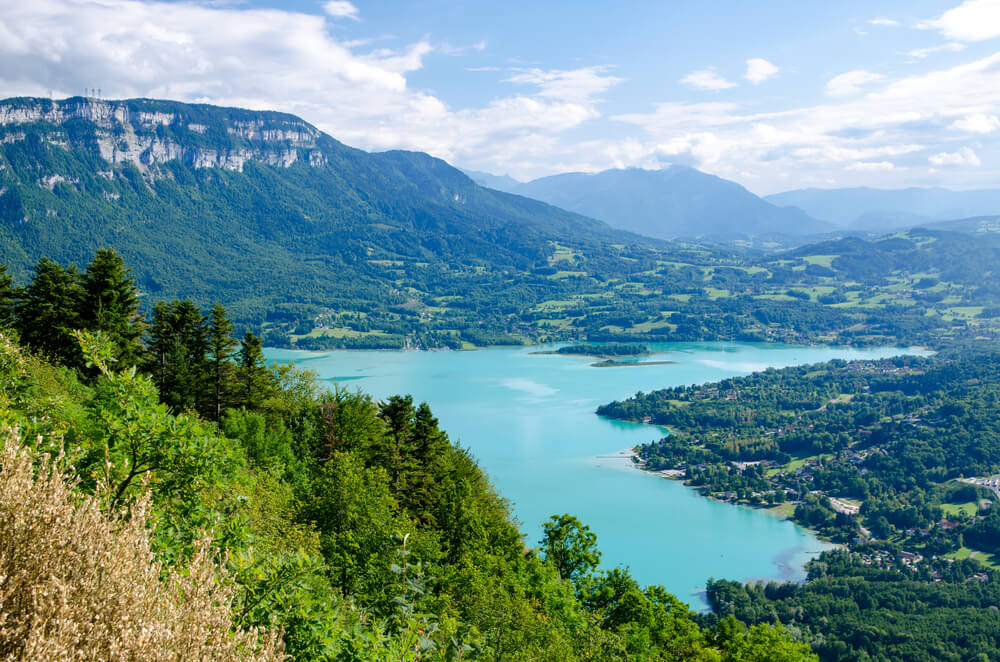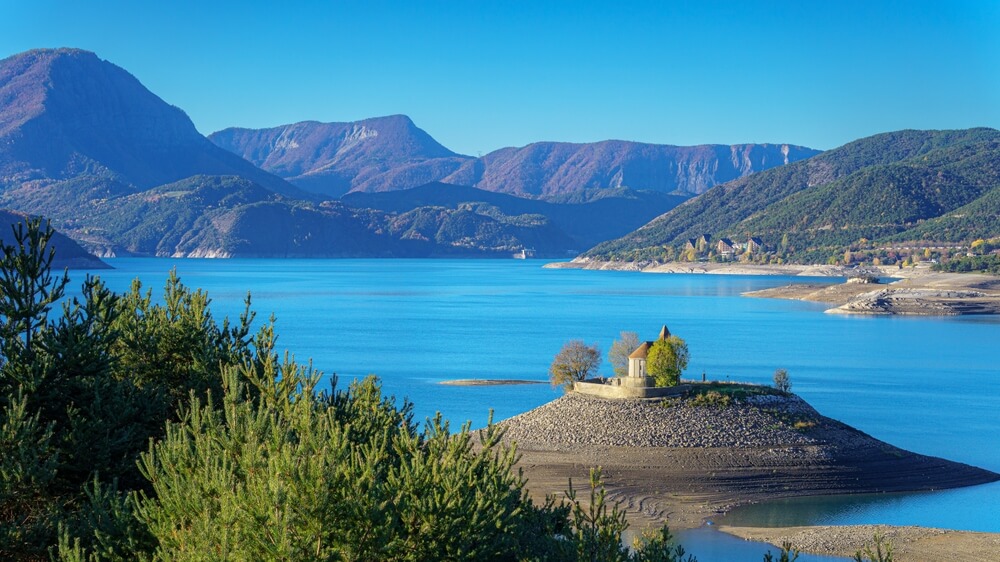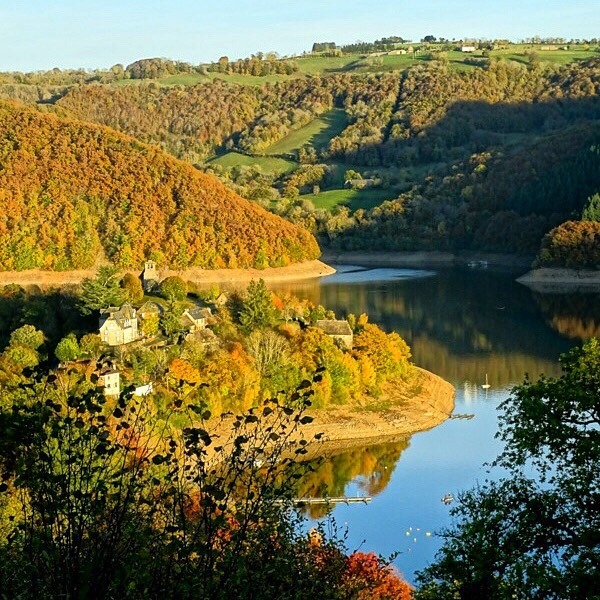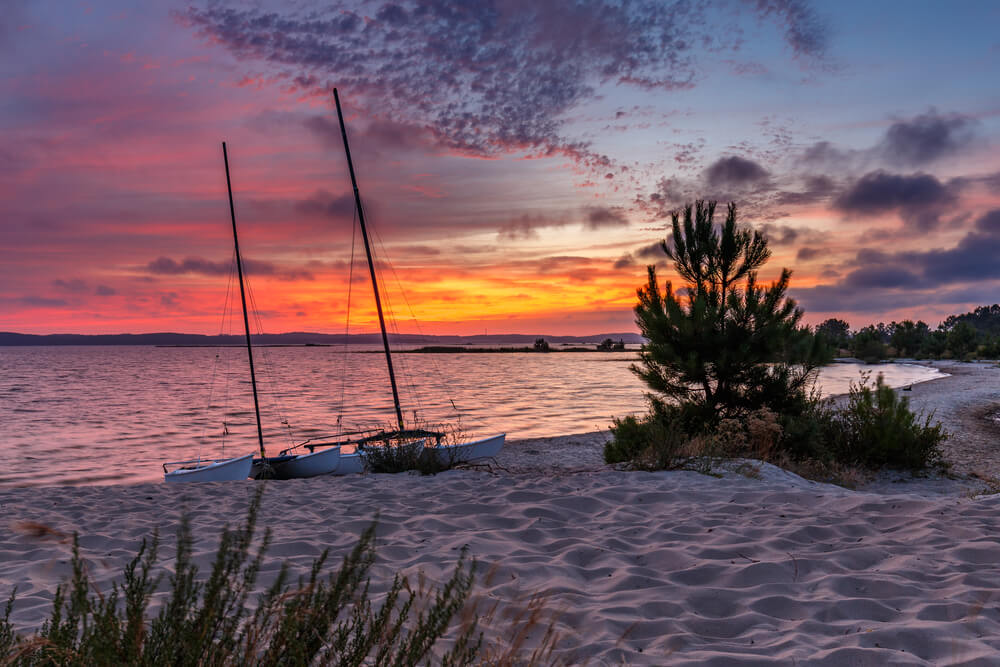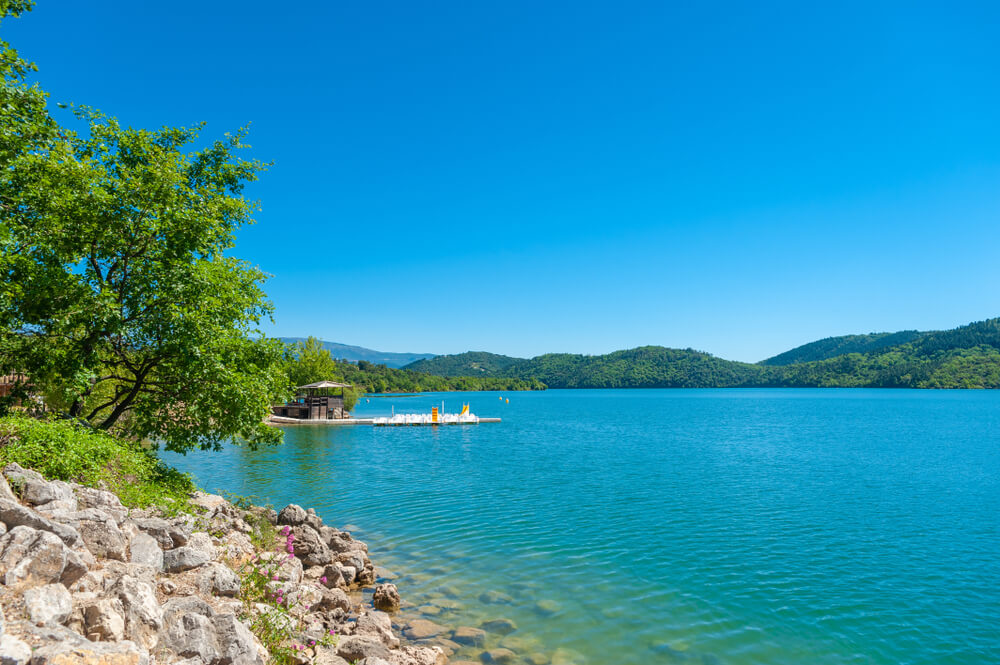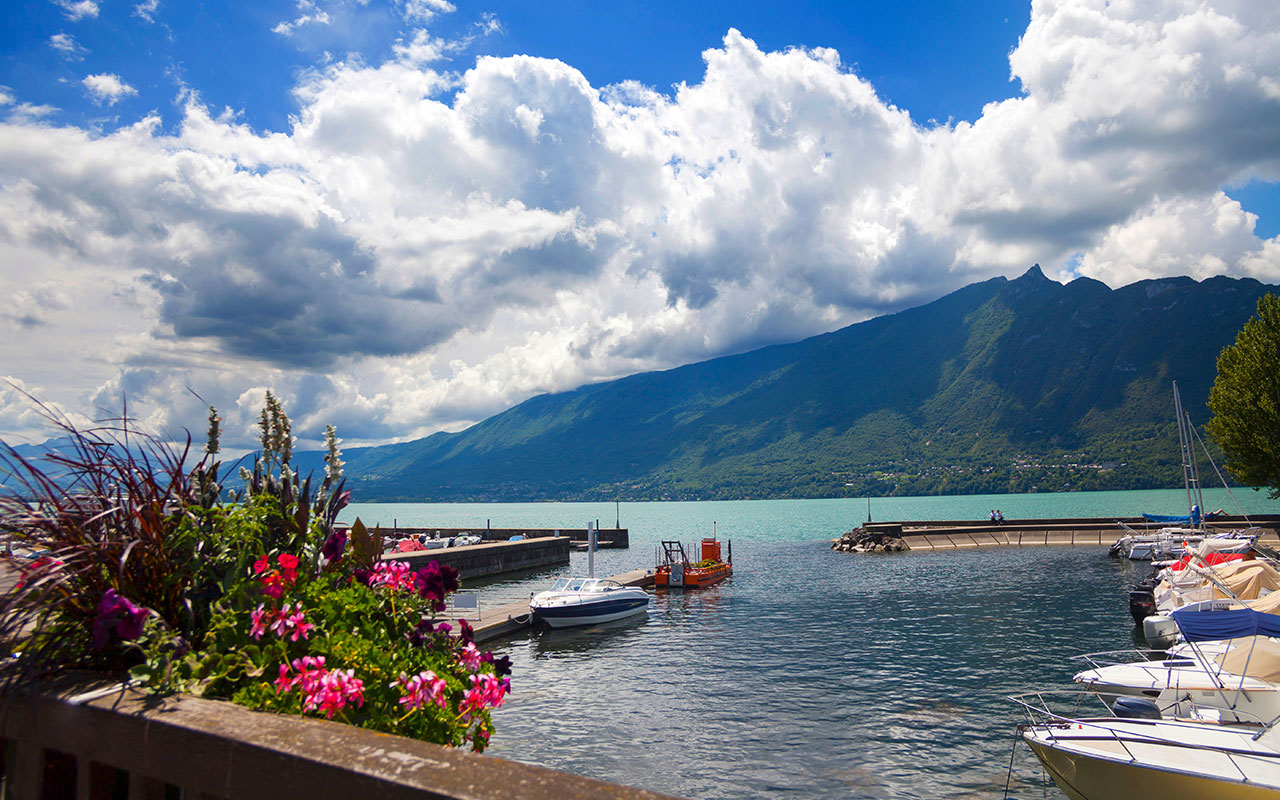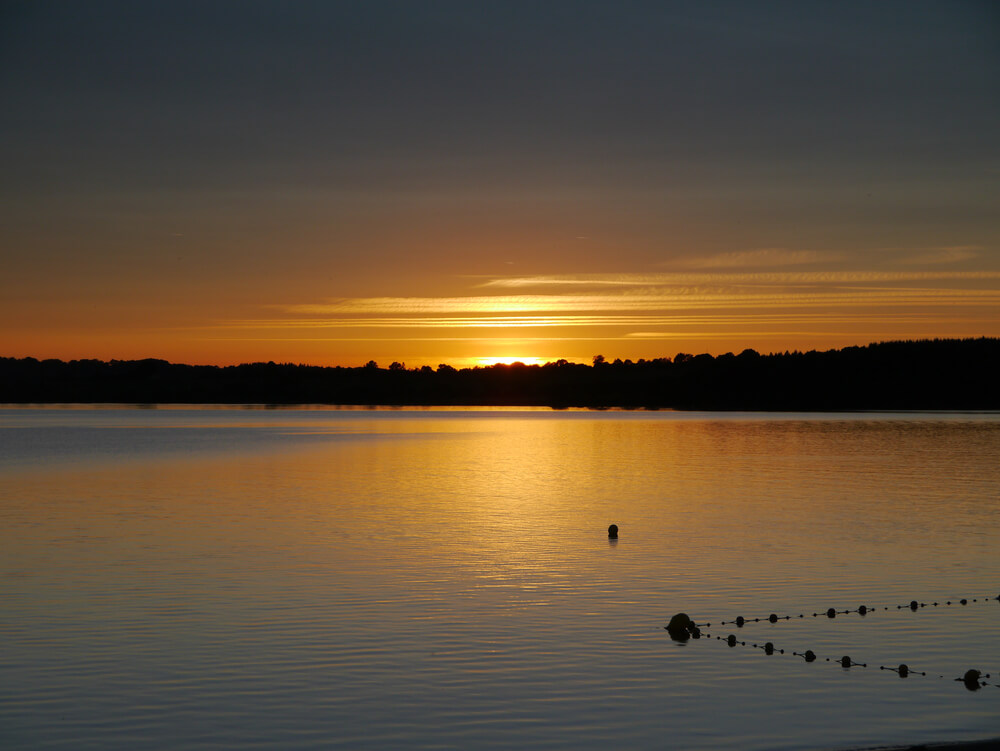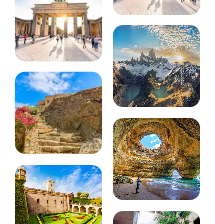The most beautiful lakes for swimming in France
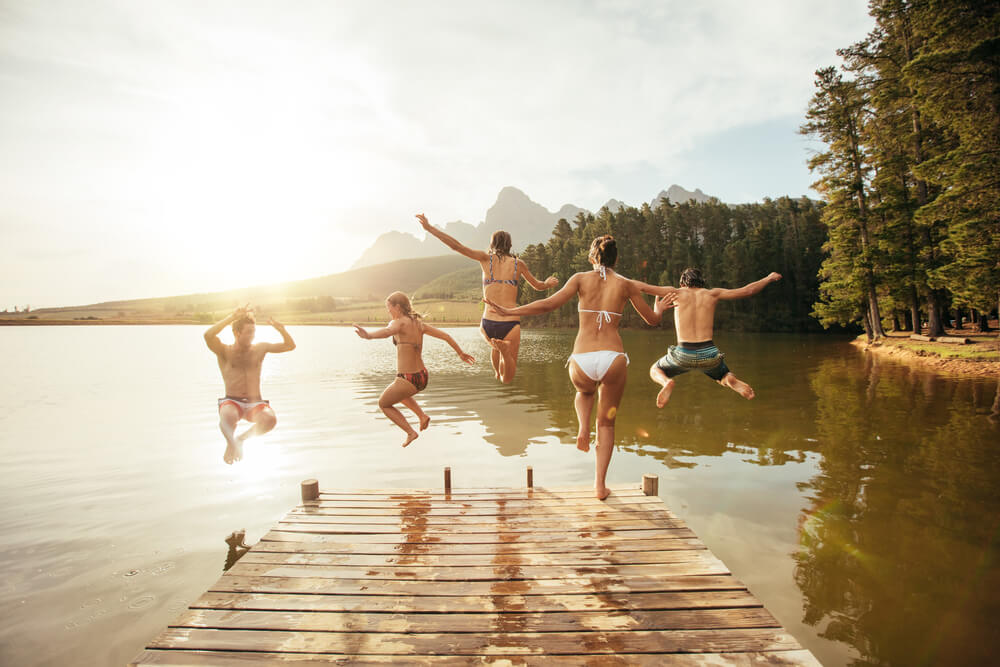
There’s no shortage of lakes in France, offering us generous stretches of deep blue in the middle of nature!
If, like us, you love taking a dip in their fresh, refreshing waters, here’s our selection of the most beautiful lakes to swim in in France!
The 14 best swimming spots in the country!
1 – Lake Annecy – Haute-Savoie
It’s beautiful, it’s pure (it’s said to be the purest lake in Europe!), it sparkles, it’s surrounded by majestic mountains, it’s the king of Instagram: the splendid Lake Annecy!
There’s much more to enjoy here than swimming in its clear waters! You can hike along the footpaths and admire it from above, take a paraglide over the lake, take a boat trip, relax on the beach or cycle around it (with a few refreshing dips!).
2. Lac de Vouglans – Jura
More than 10,000 years ago, the Jura was covered in glaciers, whose melting gave rise to numerous basins that filled with water and created a multitude of lakes.
It’s hardly surprising that the region is now dotted with wild lakes, rivers and waterfalls! The Vouglan dam and lake is the third largest man-made lake in France, with 35km of turquoise water winding through the forest.
There are three harbours and three sandy beaches for you to explore to your heart’s content! And for thrill-seekers, the via ferrata at Lac de Vouglans and its large suspension bridge offer spectacular views over the lake and the surrounding area!
3. Lake Sainte-Croix – Var
Head for the Gorges du Verdon regional nature park and its incredible Sainte-Croix lake. Much-loved by tourists for its wild side and the water sports it offers, it can get crowded in summer, so don’t hesitate to visit it out of season and let its legendary colour mesmerise you!
Don’t forget to pay a visit to Moustier-Sainte-Marie, just above Lac de Sainte-Croix, which is rightly listed as one of the most beautiful villages in France!
4. Lake Salagou – Hérault
The famous lake with red reflections in the south of France!
The Lac de Salagou was created, like many other lakes, following the construction of a dam at the end of the 1960s.
This unique place, with its southern accents, stands out for the palette of colours it unfolds before our eyes. Hills of red earth contrast with the blue of the sky and the green of the vegetation, giving ochre highlights to the calm waters of the lake. The hills are very pretty to look at, but above all they are fascinating to study, revealing geological treasures dating back over 250 million years!
It’s a great place for swimming, paddle boarding, kite surfing and mountain biking around the lake.
6. Lake Geneva – Franco-Swiss
The largest natural lake in Western Europe shares its 582.4 km² between France and Switzerland. In fact, the Franco-Swiss border runs right through the middle of this crescent-shaped lake! The northern shore and two extremities are in Switzerland, and the south-eastern shore is in France, entirely in Haute-Savoie.
For your information, Lac Léman means Lake Geneva and the name has been around since Antiquity! Julius Caesar himself referred to it as Lacus Lemanus, in 58 BC. In short, the ‘Lac Lac’ is just splendid, offering us a veritable inland sea, all blue horizons and spectacular nature.
Once again, there’s no shortage of activities! Swimming, boating, paragliding, windsurfing, diving, etc.
7. Lake Gérardmer – Vosges
Make way for the magnificent Vosges region and its superb Lac de Gérardmer.
Situated at an altitude of 660 metres, this glacial lake is the largest natural lake in the Vosges! All around it, you’ll find over 6 km of waymarked footpaths to take you deep into the deep forests that protect it.
A ski resort in winter, it becomes an amazing playground in summer: pedalos, canoes and swimming are all available in summer for a refreshing break in a green setting!
And don’t forget to come back in autumn to discover the lake flanked by mountains carpeted in colours worthy of our Canadian cousins’ finest Indian summer!
8. Lake Aiguebelette – Savoie
France’s first freshwater nature reserve, Lac d’Aiguebelette is like a Seychelles getaway for a swim.
Its translucent emerald waters shine brightly at the foot of the Montagne de l’Épine. Motorboats are not allowed on the lake, so you can be sure of absolute peace and quiet.
It’s a popular spot for locals and tourists alike, with its beaches, water sports such as rowing and exceptional panorama for paragliding!
9. Lac de Serre-Ponçon – Hautes-Alpes
Nestling in the heart of the Southern Alps, Lac de Serre-Ponçon is a true paradise for nature lovers and water sports enthusiasts!
You’ll find large, well-maintained beaches, as well as wild creeks and breathtaking viewpoints from which to admire the lake from the air!
This turquoise dam on the Durance is the largest earth dam in Europe! A multi-purpose structure, it manages the river’s flooding, supplies electricity and offers a range of water sports activities. It also serves as a water tower, supplying the entire region with drinking water!
10. Lake Sarrans – Aveyron
Photo Page Facebook Aveyron Tourisme
Lac de Sarrans and the Laussac peninsula offer an incredible reservoir of mountain water in a green setting! Here you have one of the wildest lakes in Aveyron, in an unspoilt natural setting.
Set in the foothills of the Aubrac, it stretches over more than 1,000 hectares in the Truyère gorges. It is not accessible outside its developed beaches, which means it still has protected areas that you can explore by boat.
11. Lac d’Hourtin – Gironde
The magnificent Lac d’Hourtin, just an hour from Bordeaux, is the second-largest natural lake in France after Lake Geneva, but it’s entirely in France. So you’ll often see that it’s THE largest natural lake in the country!
This huge body of water is 18km long and 5km wide, surrounded by pine forests as far as the eye can see, wild marshes and sand dunes. This unspoilt environment offers Lac d’Hourtin in a natural setting. Part of the site is protected by the national nature reserve of the dunes and marshes of Hourtin.
The Hourtin leisure park, which has been awarded the Famille Plus label, devotes 10 hectares to the little ones, with its famous “île aux Enfants”. Older children can also enjoy water-skiing, windsurfing, kitesurfing and pedal-boating, as well as hiking and cycling on the many trails around the lake.
12. Lake Saint-Cassien – Var
Head for Provence, with Lac de Saint-Cassien, a reservoir nestling in the heart of the Pays de Fayence on the southern slopes of the Esterel massif.
The dam was built in 1966 on the River Biançon to generate electricity and supply drinking water to a number of nearby towns. It also regulates high water levels in the river, preventing flooding.
But its crystal-clear waters soon attracted locals in search of a refreshing swim, and the Saint-Cassien water sports centre has become a firm favourite.
The lake is located in a protected natural area, home to fragile flora and fauna. On the eastern side of the lake, you’ll find the Fondurane biological reserve, where you can observe more than 180 species of birds.
13. Lac du Bourget – Savoie
Also considered to be the largest natural lake in France (it’s 18 km long, just like Lac d’Hourtin), Lac du Bourget is in any case the largest lake of glacial origin located entirely in France (Lac Léman is bigger, but as you know, it’s also in Switzerland!). Indeed, when the Isère and Arve glaciers retreated around 19,000 years ago, they made way for this immense lake, framed by the last ranges of the Jura mountains.
Alphonse de Lamartine used to write his poems here, dedicating his poem “Le Lac” to the lake.
It is an urban lake, surrounded by towns and villages, the largest of which is Aix-les-Bains. So you have plenty of options when it comes to choosing your beach (there are 11 in all), with each municipality having its own leisure base and access to the lake.
But it’s also a natural lake, with an unspoilt ecosystem and a wild west shore that’s inaccessible by land.
14. Lac de Pareloup – Aveyron
The Lac de Pareloup is well known to anglers, but is also very popular with bathers! This man-made reservoir covers almost 1,300 hectares on the Lévézou plateau at an altitude of over 800 metres. It’s the perfect place to escape the heat!
Its distinctive jagged shape makes it an ideal playground for water sports such as rowing, canoeing and stand-up paddling.
You’ll also find landscaped beaches, children’s play areas and areas reserved for fishing.
Conclusion
So now you’re spoilt for choice when it comes to choosing where to go for a swim this summer!
We hope we’ve given you an idea for a cool weekend away, or even a destination for your next holiday in France!
200 audioguided tours for cities all around the world
Download
